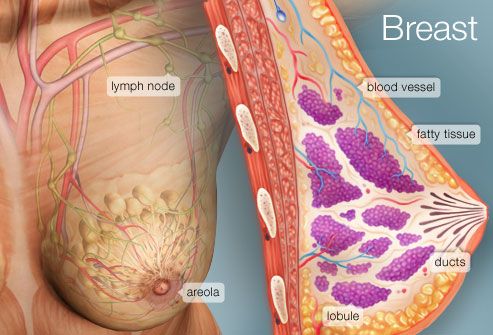
Image Source
© 2014 WebMD, LLC. All rights reserved.
The breast is the tissue overlying the chest (pectoral) muscles. Women’s breasts are made of specialized tissue that produces milk (glandular tissue) as well as fatty tissue. The amount of fat determines the size of the breast.
The milk-producing part of the breast is organized into 15 to 20 sections, called lobes. Within each lobe are smaller structures, called lobules, where milk is produced. The milk travels through a network of tiny tubes called ducts. The ducts connect and come together into larger ducts, which eventually exit the skin in the nipple. The dark area of skin surrounding the nipple is called the areola.
Connective tissue and ligaments provide support to the breast and give it its shape. Nerves provide sensation to the breast. The breast also contains blood vessels, lymph vessels, and lymph nodes.
Breast Conditions
- Breast reduction: Surgery to reduce the size of breasts. In women, this is often done to relieve neck or back pain from exceptionally large breasts. Men may also seek breast reduction for gynecomastia.
